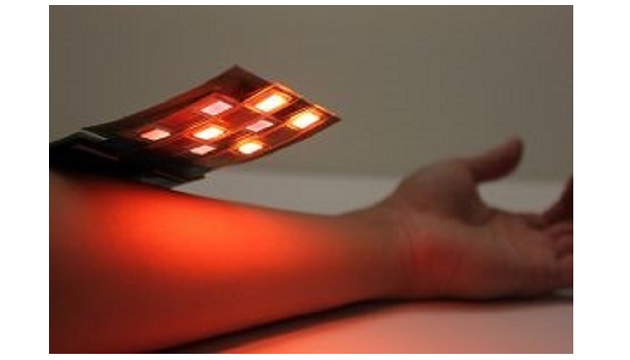A flexible sensor developed by University of California Berkeley can map blood oxygen levels over large areas of skin, tissue and organs. It is an array of alternating red and near-infrared organic LEDs and organic photodiodes printed on a flexible material.
“When you hear the word oximeter, finger-clip sensors come into your mind,” said Berkely engineer Yasser Khan. “We wanted to break away from that, and show oximeters can be lightweight, thin and flexible.”
Finger tip types use normal LEDs to shine red and near-infrared light through the skin, and then detect how much of this comes through the finger, red oxygen-rich blood absorbs more infrared, darker oxygen-poor blood absorbs more red, and the ratio of transmitted light reveals blood oxygen level.
The Berkely design relies on reflected light and, said the University, has been demonstrated tracking overall blood-oxygen levels on the forehead of a volunteer who breathed air with progressively lower concentrations of oxygen, where it matched readings from a standard fingertip oximeter. It was also used to map blood-oxygen levels in a three-by-three grid on the forearm of a volunteer wearing a pressure cuff.








